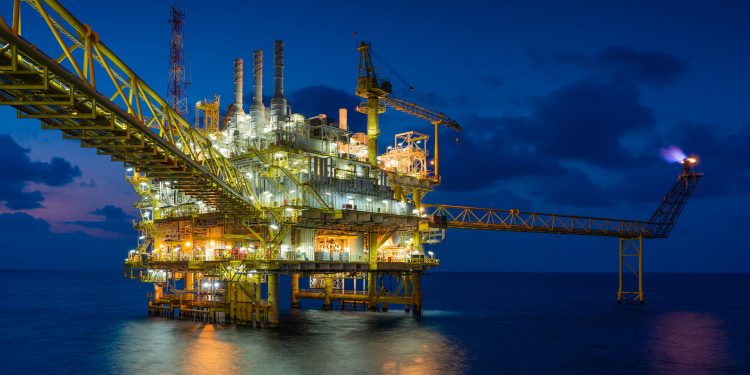As the world confronts the growing urgency of climate change, the global energy landscape is undergoing a fundamental transformation. The demand for cleaner, more sustainable energy sources is pushing countries, industries, and consumers to rethink how they generate, consume, and rely on energy. With renewable energy sources like solar, wind, and hydropower rapidly advancing, alongside continued reliance on traditional energy sources such as oil, the future of the global energy market is in a state of flux.
This article explores the accelerating global energy transition, the role of oil in a low-carbon future, and the potential for new energy sources to reshape the world’s energy mix in the years to come. We will examine how oil and renewable energy are likely to coexist in the coming decades, the challenges of achieving a net-zero future, and the opportunities for innovation in energy technology.
1. The Drivers of the Global Energy Transition
The global energy transition is being driven by a number of interconnected factors, with climate change concerns at the forefront. Countries are increasingly adopting policies aimed at reducing carbon emissions and promoting sustainability. These policies include efforts to decarbonize energy systems, encourage energy efficiency, and invest in clean technologies.
Climate Change and Environmental Commitments
The need to mitigate the impacts of climate change is perhaps the most powerful driver of the global energy transition. Governments around the world, through international agreements such as the Paris Agreement, have committed to limiting global warming to well below 2°C, with a target of 1.5°C. Achieving these targets requires significant reductions in greenhouse gas emissions, particularly in sectors such as energy, transportation, and industry, which are the largest contributors to global carbon emissions.
To meet these commitments, many nations have set ambitious targets for carbon neutrality. For example, the European Union aims to become the first carbon-neutral continent by 2050, while China has pledged to reach net-zero emissions by 2060. These targets are pushing governments, businesses, and consumers to accelerate the adoption of renewable energy sources and implement policies that drive energy transition.
Technological Advancements in Renewables
One of the key factors enabling the global energy transition is the rapid advancement of renewable energy technologies. The cost of solar and wind power has decreased significantly in recent years, making them increasingly competitive with fossil fuels. Solar power, in particular, has seen exponential growth in both installed capacity and efficiency, while wind energy has become a significant player in electricity generation, particularly in regions with favorable conditions.
In addition to solar and wind, advancements in energy storage technologies, such as batteries, are making it possible to store renewable energy more efficiently. These technologies are overcoming one of the major challenges of renewable energy—its intermittency—by allowing excess energy to be stored and used when demand is high or when the sun isn’t shining and the wind isn’t blowing.
Geopolitical and Economic Shifts
The global energy transition is also being influenced by economic and geopolitical factors. Oil-rich countries have traditionally dominated the global energy landscape, but the shift towards renewables is challenging the traditional power dynamics. As the world reduces its dependence on oil and gas, these countries are facing the challenge of diversifying their economies to remain competitive. Some, like Saudi Arabia and the United Arab Emirates, are making significant investments in renewable energy projects and exploring new industries like hydrogen and technology-driven solutions.
At the same time, global energy markets are being reshaped by rising demand for clean technologies, such as electric vehicles (EVs), which rely on renewable energy for charging. The shift towards a cleaner energy system is leading to the creation of new energy markets, including carbon trading, green bonds, and green hydrogen, all of which present new economic opportunities and challenges.
2. The Future of Oil in a Low-Carbon World
Despite the rapid growth of renewable energy, oil remains a critical component of the global energy mix, particularly in sectors like transportation, industrial production, and chemicals. However, as the world transitions to a low-carbon economy, the future of oil will likely face significant changes.
Declining Demand for Fossil Fuels in Power Generation
One of the most significant shifts in the energy sector is the decline in the use of oil for electricity generation. The energy transition is driving the move away from fossil fuels in favor of renewables, which are more sustainable and environmentally friendly. As renewable technologies like solar and wind become more affordable and efficient, oil-fired power plants are being phased out in favor of cleaner alternatives.
In many regions, coal and natural gas have already seen significant declines in power generation, and oil is expected to follow the same trajectory. As governments introduce stricter regulations on carbon emissions and shift incentives toward renewable energy, oil will likely see reduced demand in power generation, particularly as renewable infrastructure expands globally.
Oil in Transportation: The Electric Vehicle Revolution
The transportation sector has long been one of the largest consumers of oil, primarily in the form of gasoline and diesel for cars, trucks, and airplanes. However, the rapid growth of electric vehicles (EVs) is starting to disrupt this demand. Many countries are introducing ambitious targets for EV adoption, with some even announcing bans on the sale of new internal combustion engine vehicles within the next few decades.
For example, the European Union aims to ban the sale of gasoline and diesel cars by 2035, and China has set a target of having new energy vehicles (NEVs) make up 40% of all car sales by 2030. As EVs gain market share, oil consumption in transportation will gradually decline, particularly in personal vehicles and light-duty trucks. The rise of EVs, combined with greater investments in public transportation, is likely to reduce the demand for oil in the transportation sector.
However, oil will continue to play a significant role in sectors like aviation, shipping, and heavy-duty trucking, which are more difficult to electrify. While alternative fuels such as biofuels, hydrogen, and synthetic fuels are being explored, these sectors will remain reliant on oil for the foreseeable future.
Oil as a Feedstock for Chemicals and Petrochemicals
Another important role of oil is its use as a feedstock for the petrochemical industry. Oil and natural gas are used to produce a wide variety of chemicals, plastics, and synthetic materials that are essential to modern life. Despite the global shift toward cleaner energy sources, the demand for petrochemicals is expected to remain strong, particularly as population growth and urbanization continue.
While alternatives to petroleum-based plastics, such as biodegradable materials and plant-based alternatives, are being explored, the petrochemical industry will likely remain a significant consumer of oil in the future. This means that while oil demand may decline in the energy sector, its role in manufacturing and chemicals will remain critical.

3. The Rise of New Energy Sources: Solar, Wind, Hydrogen, and Beyond
As oil and gas gradually lose their dominance in the global energy landscape, new energy sources are emerging as key players in the drive toward decarbonization. These include solar power, wind energy, green hydrogen, and energy storage technologies.
Solar and Wind Power: Dominating the Future Energy Mix
Solar and wind energy have seen explosive growth in recent years and are expected to continue playing a dominant role in the global energy mix. Both of these renewable sources have experienced significant technological advancements, making them more efficient and cost-effective. The International Energy Agency (IEA) predicts that by 2050, solar power will become the largest source of electricity generation worldwide.
Wind energy, particularly offshore wind farms, is also poised for significant growth. As countries work toward meeting their net-zero goals, they will continue to invest heavily in large-scale renewable energy projects. The combination of solar, wind, and other renewables offers a path to significantly reduce global reliance on fossil fuels.
Green Hydrogen: The Fuel of the Future?
Green hydrogen has emerged as a promising alternative energy source, particularly for industries that are difficult to electrify, such as heavy industry and transportation. Hydrogen produced using renewable energy (green hydrogen) can be used as a clean fuel for everything from industrial processes to long-distance trucking, shipping, and even aviation.
Hydrogen can be stored and transported more easily than electricity, making it a flexible energy source that can complement intermittent renewable energy sources like solar and wind. Countries like Germany, Japan, and Australia are already investing heavily in hydrogen infrastructure, and it could become a critical component of the global energy transition.
Energy Storage: The Key to a Renewable Future
As renewable energy sources like solar and wind become more widespread, the challenge of energy storage remains a critical issue. Energy storage technologies, such as batteries, pumped hydro, and even compressed air storage, are essential for ensuring a reliable and stable energy supply.
Advances in battery technology, particularly lithium-ion batteries, have significantly improved the ability to store renewable energy. In the coming years, further advancements in energy storage will be crucial for enabling widespread adoption of renewables and ensuring that energy can be reliably stored and distributed when needed.
4. Challenges and Opportunities for the Energy Transition
While the global energy transition holds immense promise, there are significant challenges that must be overcome to ensure a smooth and equitable transition.
Transitioning Communities and Workers
The transition away from fossil fuels will have significant social and economic implications, particularly for communities and workers who depend on the oil and gas industries. Governments and businesses must work to create a just transition that supports workers in these sectors, providing retraining opportunities and ensuring that they are included in the new green economy.
Investment and Infrastructure
The energy transition will require massive investments in infrastructure, including renewable energy plants, energy storage systems, and grid modernization. Additionally, governments will need to provide financial support and incentives to encourage private-sector investment in clean technologies. Without the necessary infrastructure, the transition to renewables could be hindered.
Energy Access and Equity
As the world moves toward cleaner energy, it is essential to ensure that the benefits of the energy transition are shared equitably. Developing nations, which often lack reliable access to electricity, must be included in the global transition. Ensuring affordable and reliable energy access for all is essential for sustainable development and poverty reduction.
5. Conclusion: A Complex and Evolving Energy Future
The future of global energy is undoubtedly shaped by the forces of climate change, technological innovation, and geopolitical shifts. While oil remains a critical part of the global energy landscape, its role is being redefined as renewable energy sources like solar, wind, and green hydrogen rise in prominence. The key challenge for policymakers, businesses, and consumers is to navigate this complex transition in a way that balances economic, environmental, and social priorities.
The accelerating global energy transition presents both opportunities and challenges. With continued innovation, investment, and international cooperation, the world can move toward a more sustainable and resilient energy future. While the path ahead may be uncertain, one thing is clear: the global energy landscape will look very different in the coming decades, with renewable energy at the forefront of this transformation.





























